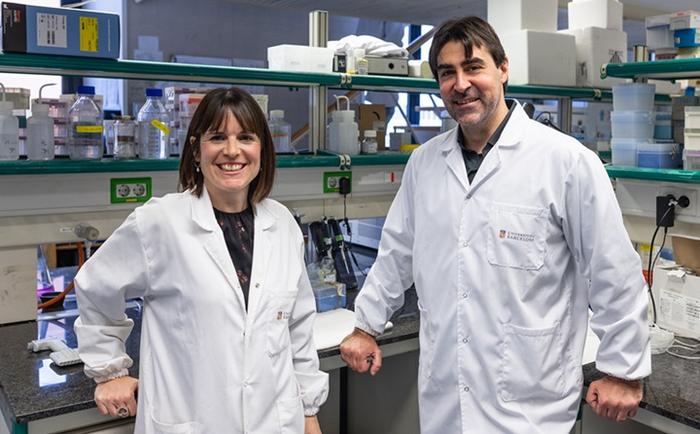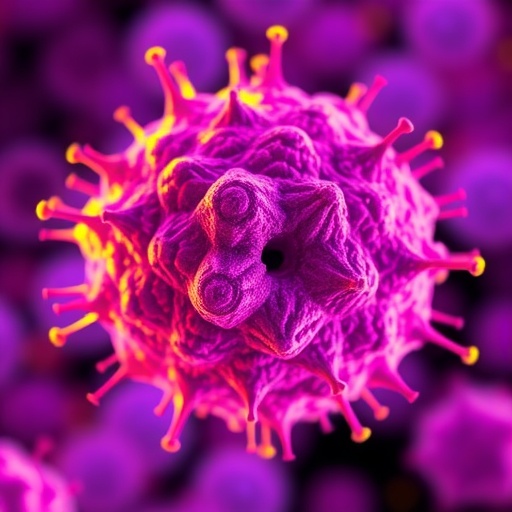
In a groundbreaking study led by Professor Joan Montero from the University of Barcelona, researchers are shining a light on the perplexing world of senescent cells. These cells, often described as the body’s aging agents, arise post-chemotherapy and radiotherapy treatment, occupying a unique niche in the cancer narrative. They are defined by their inability to divide yet remain metabolically active. This survival, while seemingly benign, significantly complicates cancer treatment regimens, as these senescent cells can hinder recovery and even contribute to tumor recurrence. In a recent publication in the esteemed journal Cell Death and Differentiation, Montero and his team unveil a novel molecular mechanism that could pave the way for targeted therapies aimed at eliminating these problematic cells.
Senescent cells, often immune to programmed cell death, become a significant concern in the context of cancer treatment. They arise from various stress factors, including chemotherapeutic agents and radiation therapy. While these interventions are designed to eradicate tumors, they inadvertently spawn cell populations that, while inactive in terms of proliferation, possess metabolic activity that could lead to adverse long-term health outcomes. A closer examination of the survival mechanisms that allow these cells to persist highlights a critical area of research that might improve therapeutic approaches for patients undergoing cancer treatment.
A common question arises: why do senescent cells exhibit such resilience? According to Professor Montero, the answer lies in the intricate interplay of biological mechanisms triggered during treatment. Chemotherapy and radiotherapy are not exclusively destructive; they can incite a cellular response leading to senescence. In this context, senescent cells become detrimental not only due to their survival but also because they can contribute to the re-establishment of tumors, effectively undermining the initial success of cancer therapies. This dual role of senescent cells underscores the necessity of understanding their biology in the quest for improved cancer treatment strategies.
The research team focused their efforts on elucidating the molecular factors that enable the dominance of senescent cells post-treatment. The BCL-2 family of proteins emerged as a crucial component of this investigation, as these proteins play a pivotal role in regulating cell death. This family includes both pro-apoptotic proteins, which promote cell death, and anti-apoptotic proteins, which inhibit it. The study explores the dynamics of these protein interactions and how they may be manipulated to foster successful elimination of senescent cells, thus enhancing recovery prospects for cancer patients.
As the study progressed, the researchers employed BH3 profiling, an advanced technique developed in the Dana-Farber Cancer Institute, to delve deeper into the interactions between BCL-2 family proteins and senescent cells. This profiling technique allows for precise evaluation of the apoptotic machinery at play, aiding in the identification of key players in the survival of these stubborn cells. The findings revealed that BCL-XL, an anti-apoptotic protein, exhibited increased presence and activity in senescent melanoma cells, revealing a crucial vulnerability that could be exploited for therapeutic gain.
In their quest for effective treatment modalities, the researchers identified compounds with senolytic activity, which specifically target and eliminate senescent cells. These compounds, including A-1331852 and navitoclax, may provide a practical path for researchers striving to improve patient outcomes. By exploiting the vulnerabilities identified in the BCL-XL protein, therapeutic strategies can potentially shift the balance from survival towards eradication of senescent cells. The hope is that by diminishing these problematic cells, the possibility of tumor recurrence could be significantly reduced.
Another intriguing facet of this research is the role of the HRK protein, which functions as a regulator of BCL-XL. The study found that levels of HRK protein decline during the induction of senescence, thereby freeing BCL-XL to carry out its protective role. The profound implications of these findings suggest that therapies that could maintain or enhance HRK levels might provide a two-fold benefit: promoting the apoptosis of senescent cells while simultaneously preventing their restorative influence on tumor recurrence.
This research opens new avenues for future studies aimed at translating these findings into clinical applications. While the study focuses on melanoma, the authors emphasize the potential for these molecular mechanisms to apply across a spectrum of cancer types. The next steps will involve assessing whether the insights gained from melanoma can be replicated in other cancers, such as lung or breast cancer. Understanding the universality of these mechanisms could lead to broad-spectrum strategies in the fight against multiple cancer manifestations.
Moreover, understanding the influence of BCL-2 family proteins in the aging process further extends the impact of this research beyond oncology. The role these proteins play in senescence may correlate with broader patterns of aging that affect various tissues and organs. This exploration could contribute valuable insights into age-related diseases, linking cancer biology with the fundamental processes of aging.
The researchers express optimism that the identification of key molecular interactions will catalyze the development of innovative therapies aimed at eliminating senescent cells, ultimately improving the therapeutic landscape for cancer patients. As they prepare for additional research studies, Montero and Alcon highlight the necessity of interdisciplinary collaboration and continued investigation into the molecular basis of senescence.
In summary, the findings from this study illuminate a critical aspect of cancer biology and provide a foundational understanding for further exploration into the toxic legacy left by cancer therapies. By shedding light on the survival mechanisms of senescent cells, this research holds promising implications for therapeutic innovations aimed at not only enhancing cancer recovery but also improving the quality of life for patients enduring the long-term effects of treatment.
Subject of Research: Cells
Article Title: HRK downregulation and augmented BCL-xL binding to BAK confer apoptotic protection to therapy-induced senescent melanoma cells
News Publication Date: 3-Dec-2024
Web References: Nature.com
References: doi:10.1038/s41418-024-01417-z
Image Credits: UNIVERSITY OF BARCELONA
Keywords: Senescence, BCL-2 Family Proteins, Cancer Therapies, Oncology, Cell Death, Melanoma.
Tags: Aging-related diseasesApoptosis regulationBCL-2 family proteinsBCL-XL proteinBH3 profiling techniqueCancer TherapyMelanoma treatmentMolecular mechanisms in cancerOncology ResearchSenescent cellsSenolytic compoundsTumor recurrence prevention





